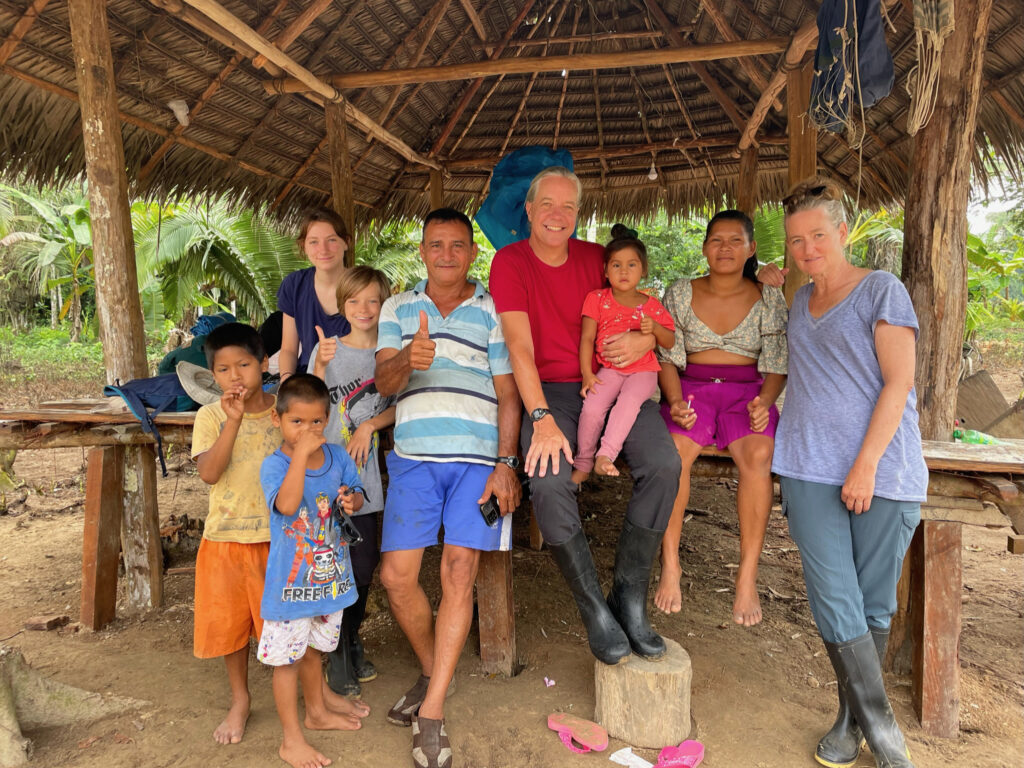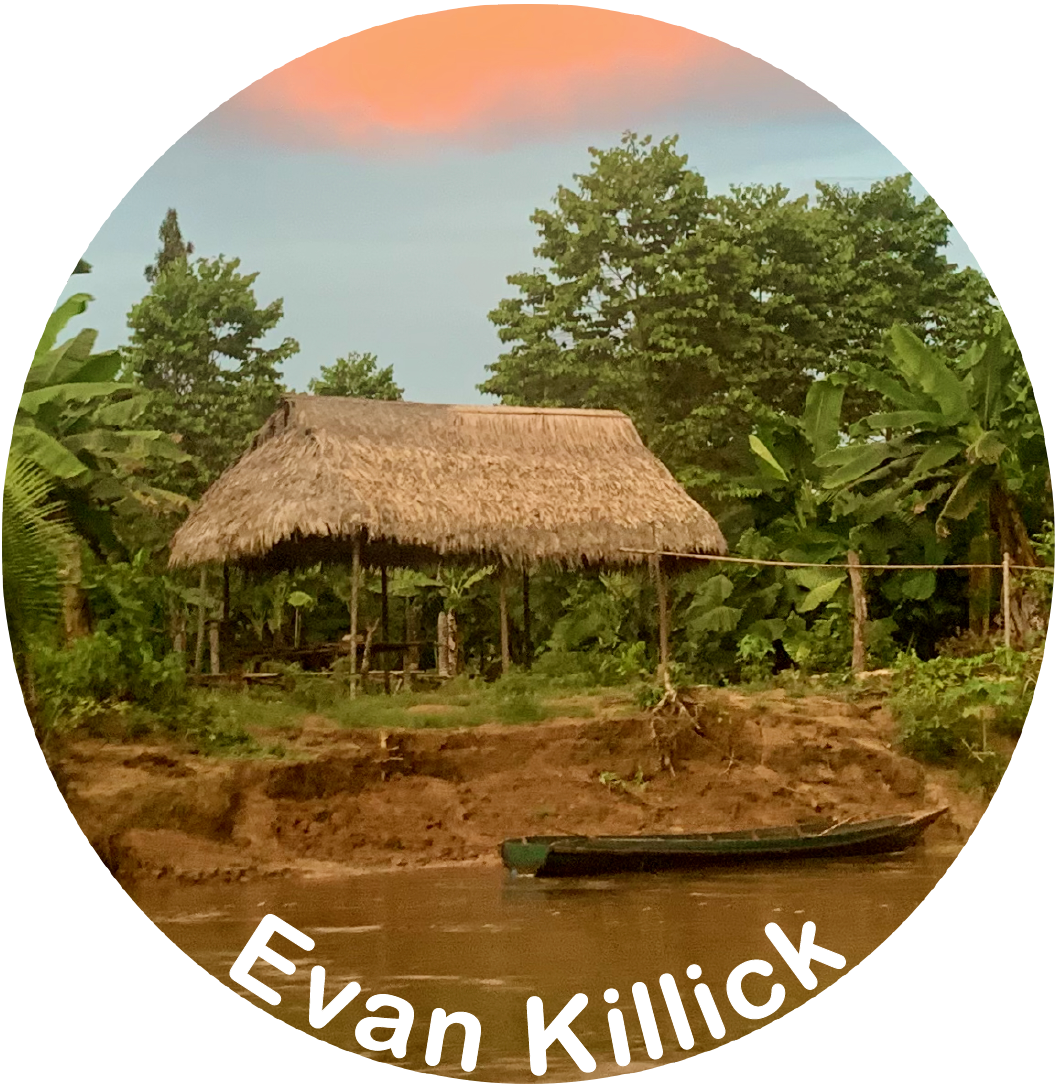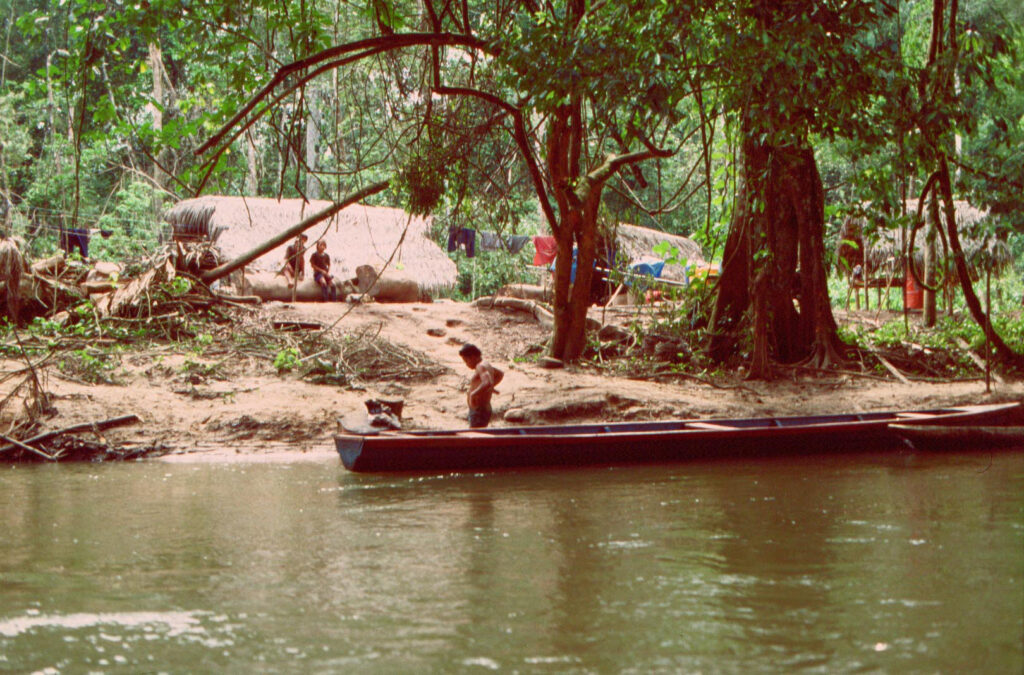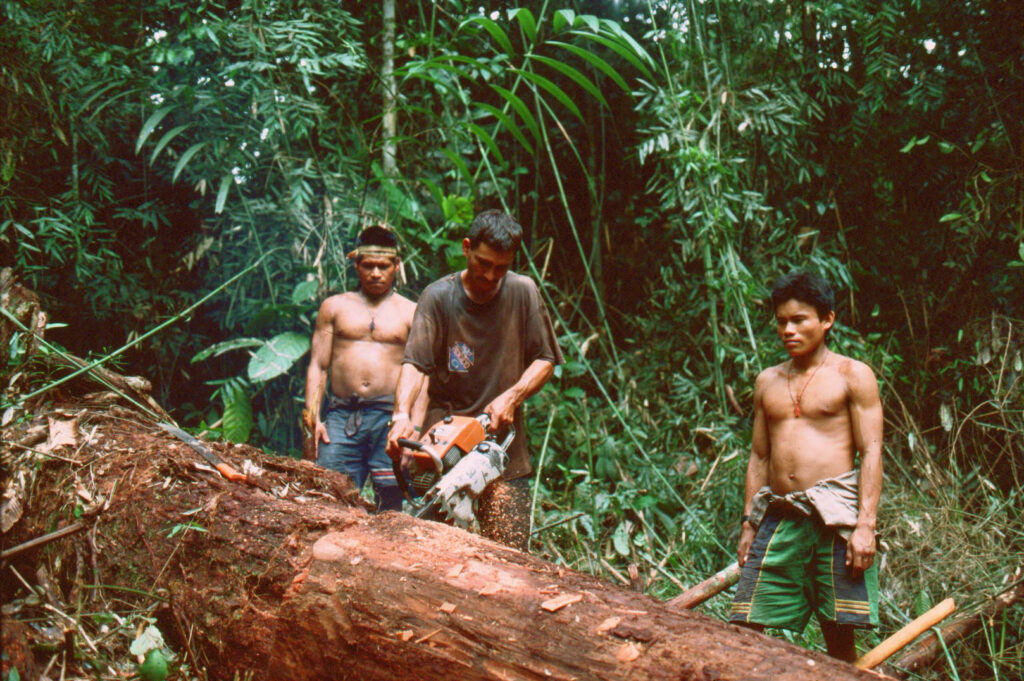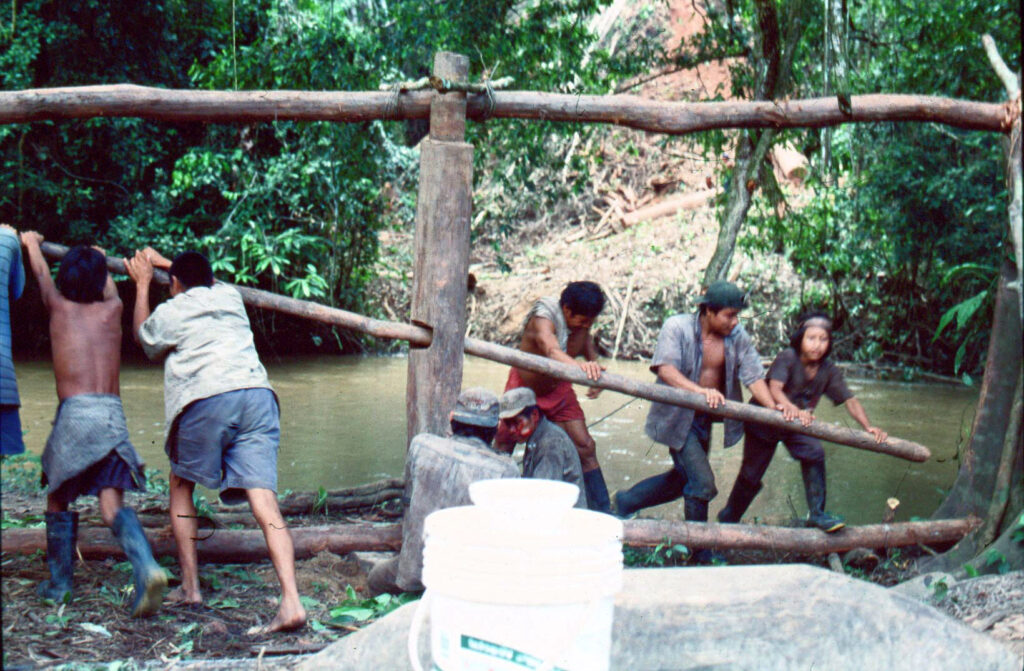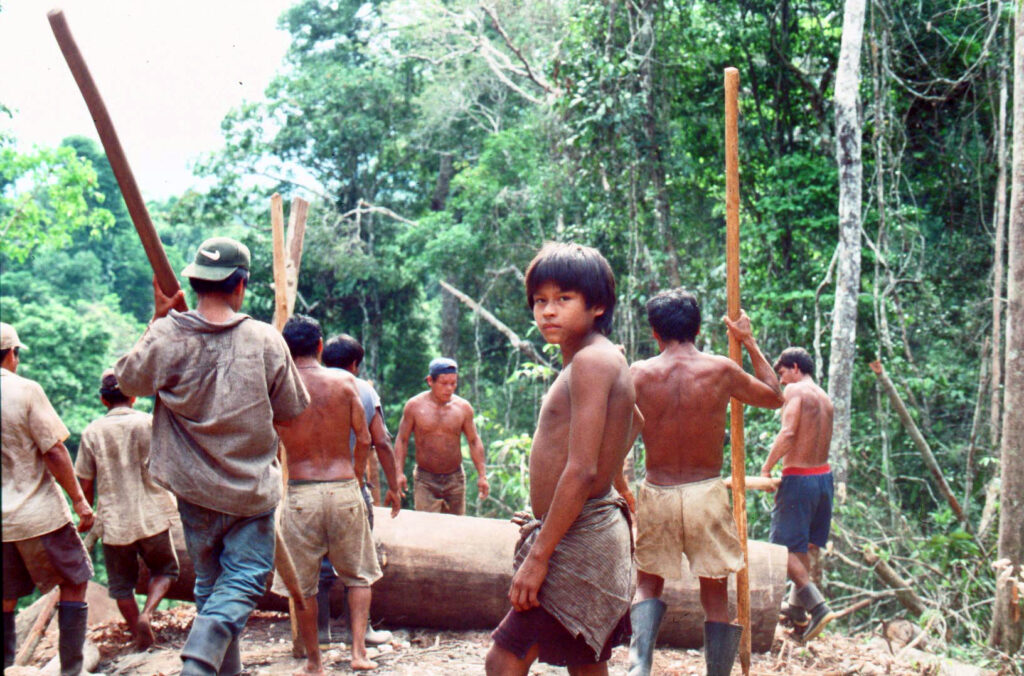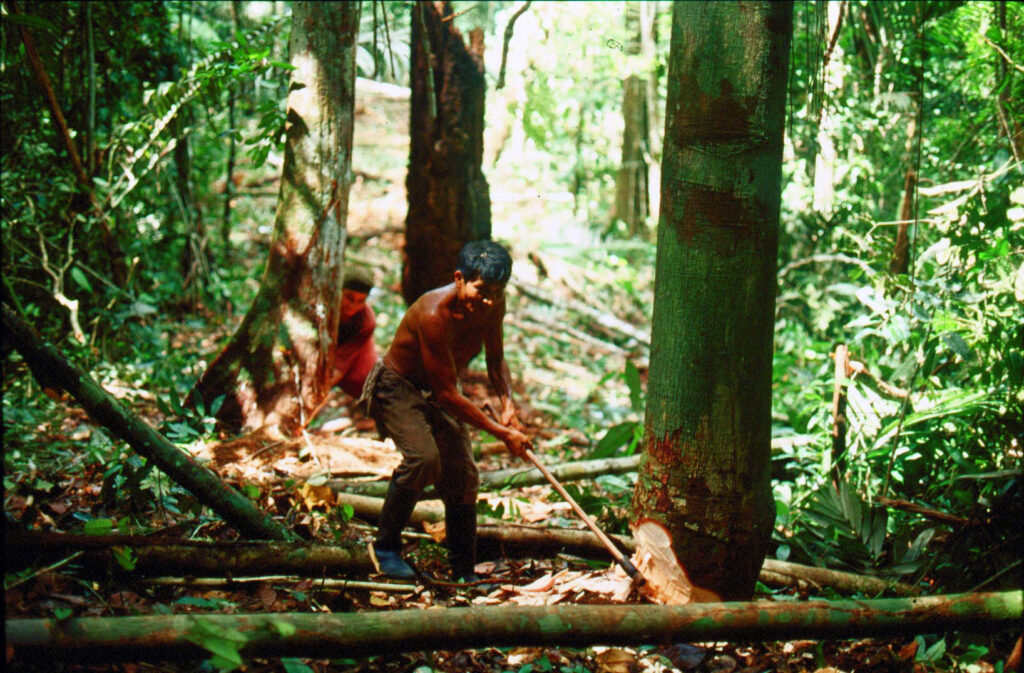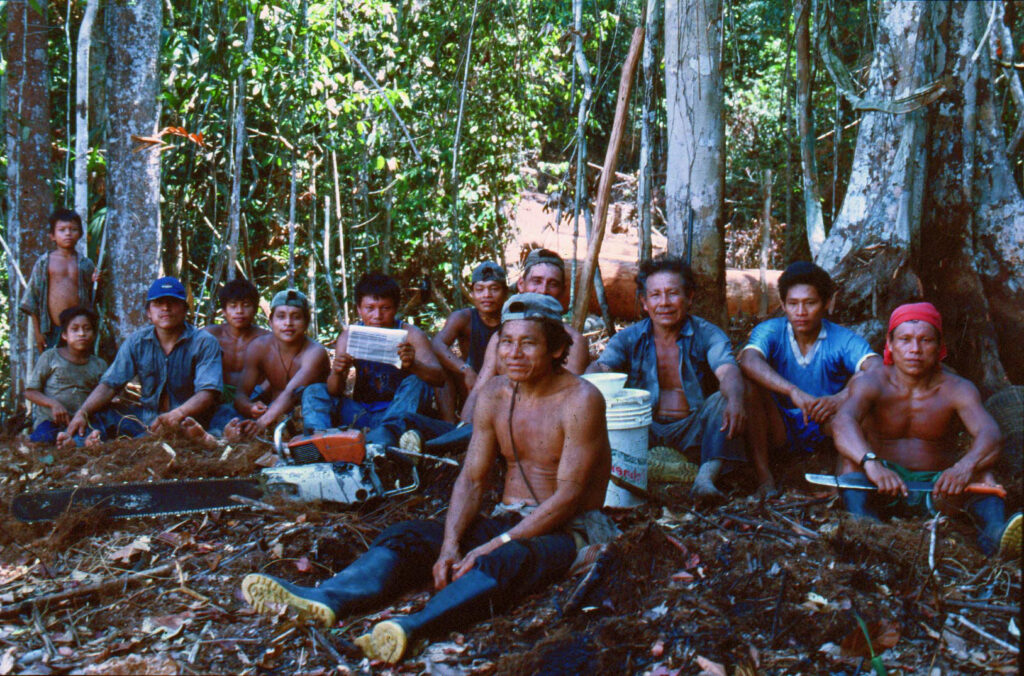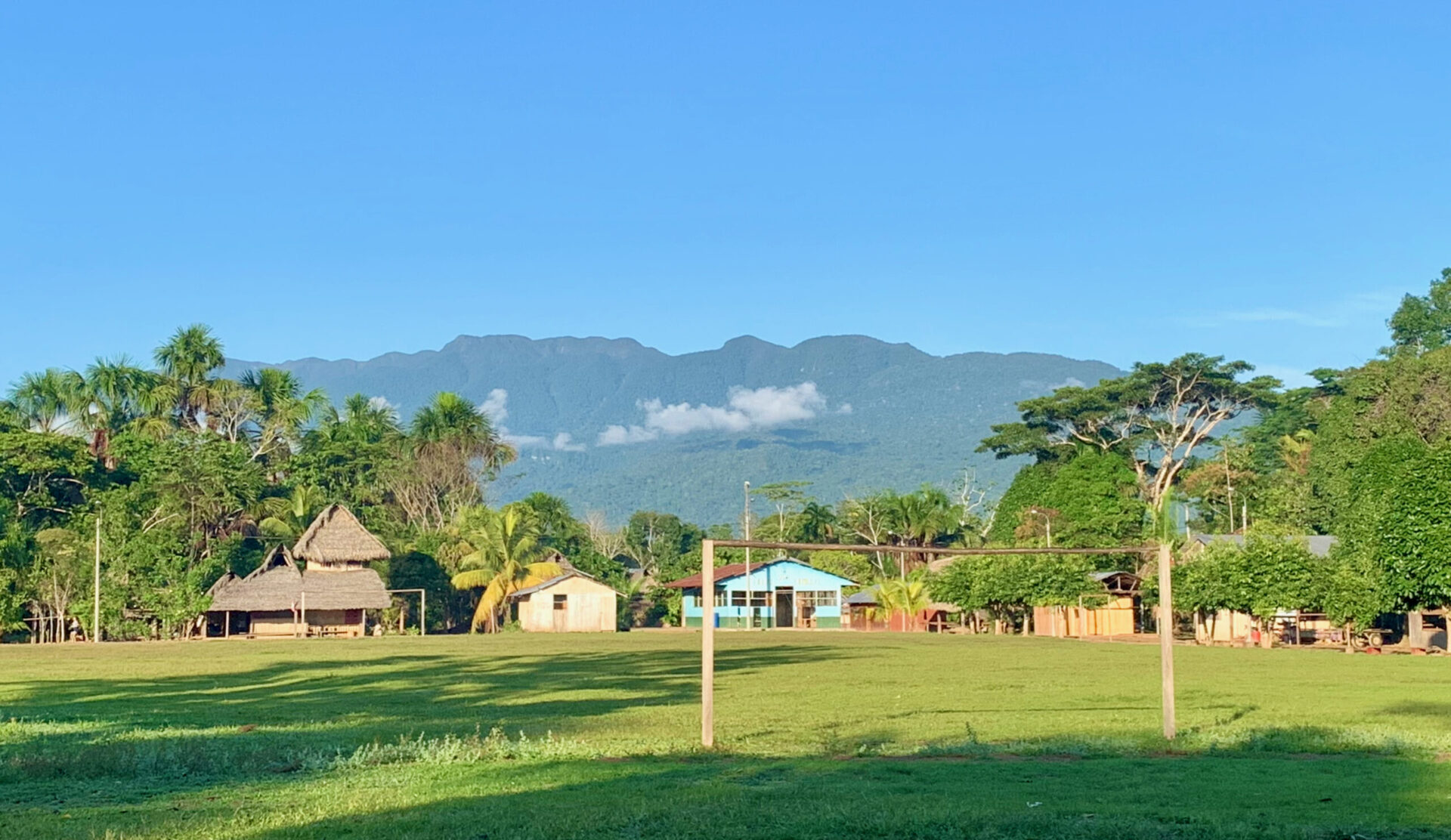
Asheninka People and Communities in Peru
I first visited Indigenous, Asheninka communities on the Ucayali River in Peruvian Amazonia in 1999, returning for my PhD fieldwork from 2001-2003. Living and working with members of two Comunidades Nativas my research focused on social relations, leadership and Asheninka peoples’ engagement with wider Peruvian national society.
A key strand that emerged was how and why these forest-living people appeared to be willing participants in the local timber industry.
From a theoretical perspective my PhD work moved beyond the, then current, approaches that emphasised either conviviality or alterity in Amazonian societies. Instead, I argued that Asheninka people favour social ties that remain voluntary, limited and flexible, and that are based on relations of ‘amity’ (‘friendship’) rather than on kinship. Such relations, I argued, draw individuals into wider collaborative social and economic networks while allowing the maintenance of their autonomy and independence.
This insight was then important in considering how and why Asheninka individuals have been willing to enter the timber industry. Beyond purely economic explanations and individuals’ desires for manufactured goods, I showed how Asheninka individuals’ engagement was facilitated, and in part driven, by the way in which the local economic form of habilitación (debt peonage) mirrored older, Asheninka ayompari trading partnerships. My argument was that the mutually-dependent relationships formed between mestizo (mixed-heritage) timbermen and local Asheninka men and their families should not be seen as something imposed from outside but rather as actively sort out and maintained by both sides through relationships based on mutuality and delayed reciprocity.
Asheninka Language
After a period of working in other parts of Latin America I turned my research focus back to Peru in 2017 when I helped organise an Intercultural Workshop on Collaborative Research. Working with the Intercultural Association of Atalaya, SHARE-Amazonica and the indigenous university UCSS-NOPOKI, the workshop brought together researchers, allies, students and leaders representing a range of Indigenous Peoples from the region. The aim was to collectively reflect on the many issues facing the region and consider pathways for effective collaborative research and action. The Landscapes of Conservation project was one outcome of this workshop but a more immediate one was the Peruvian government’s recognition of Asheninka as Peru’s 48th Official Language.
A key issue that came out during the workshop was of the linguistic and cultural differences between Asheninka and Ashaninka peoples and their languages and the negative outcomes of the lack of official recognition of the former.
Further exploration of this issue emphasised the discrimination that Asheninka people and their children felt when schooling was led by Ashaninka teachers, and all bilingual educational and government materials were produced only in Ashaninka, which had been the case since the official recognition of Ashaninka in 2008.
During the workshop efforts were made to pinpoint where and how Asheninka political organisations needed to approach the Peruvian Ministries of Culture and Education in order to push for change. Letters were also drafted by them as well as the academics present.
The presentation of these letters and the concerted support fomented by our workshop led to a surprisingly quick response from the relevant Peruvian ministries. Within a few months the official process of ‘standardisation’ of the language was started and within two years, in April 2019, Asheninka gained official recognition.
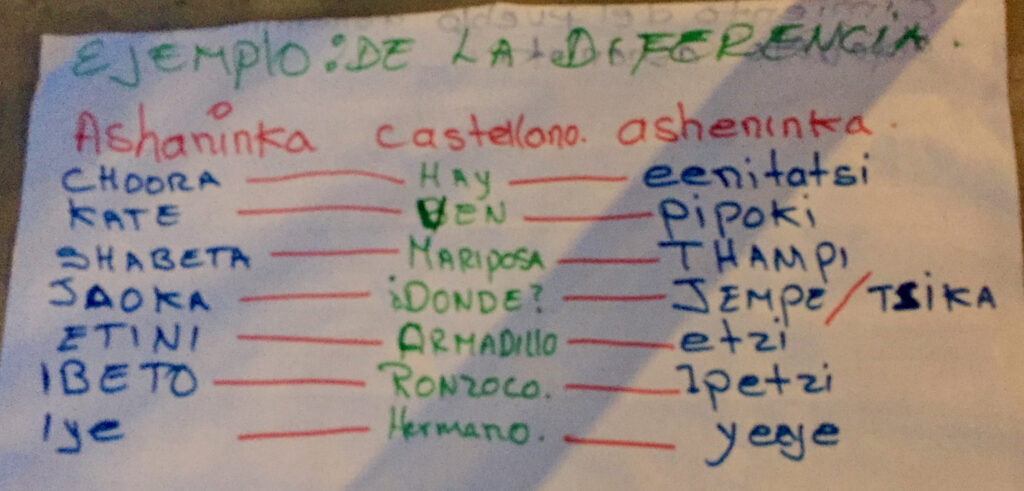
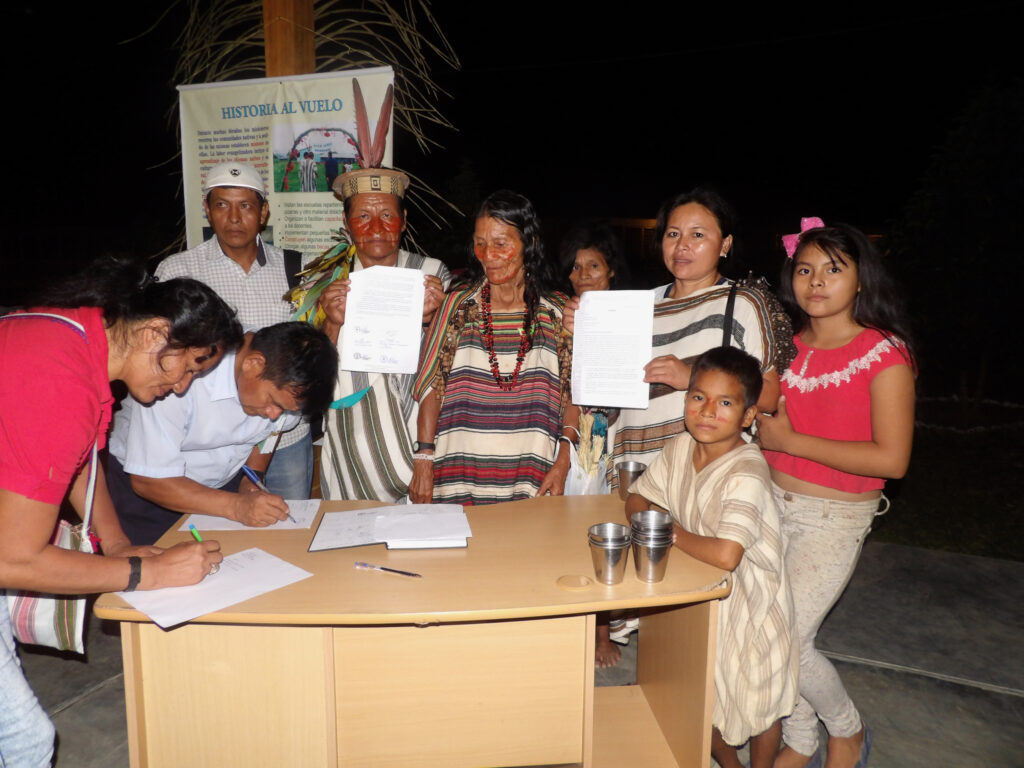
As a direct result of this official recognition, Asheninka children are now being taught and provided with educational materials in their own language, while healthcare is also being made more accessible. I have been continuing to support the production of further educational materials. In 2023 this occurred through a HEIF grant to cover the printing and distribution costs of the book Guía teórica del idioma Ashéninka (Theoretical Grammar Guide of the Asheninka Language).
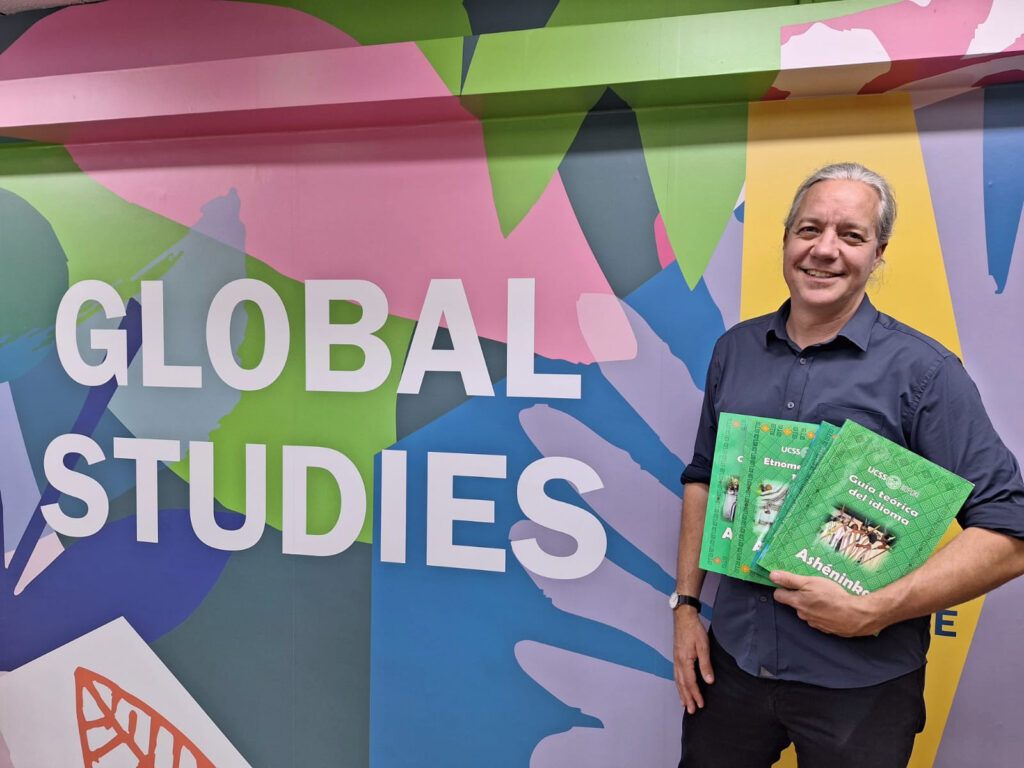
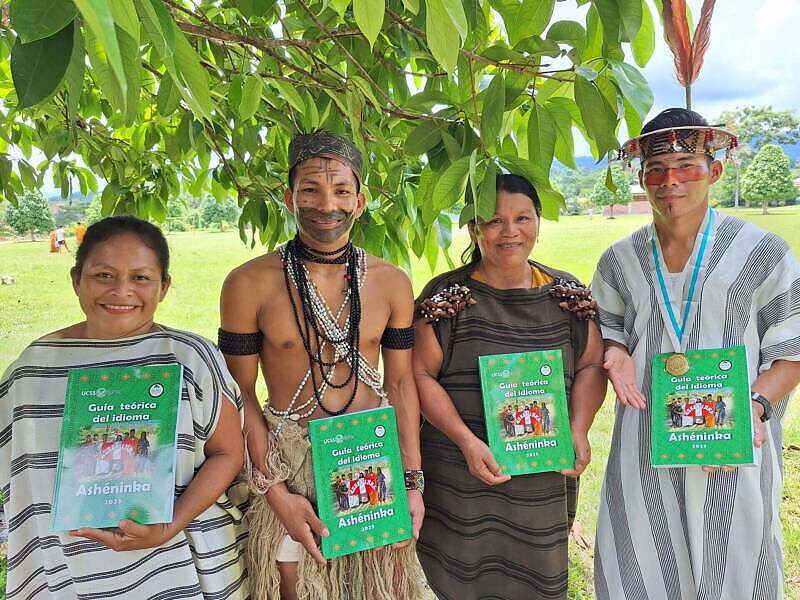
Reserva Comunal El Sira
The El Sira Communal Reserve was founded in 2001 just as I started my PhD fieldwork on the Ucayali. It is only in the past five years, however, that its presence has started to be felt and recognised by the communities I work with. This interaction has become a new focus of my work, tracing both local resentment to what is understood as an outside imposition on local lives but also its influence on changing attitudes towards timber extraction.
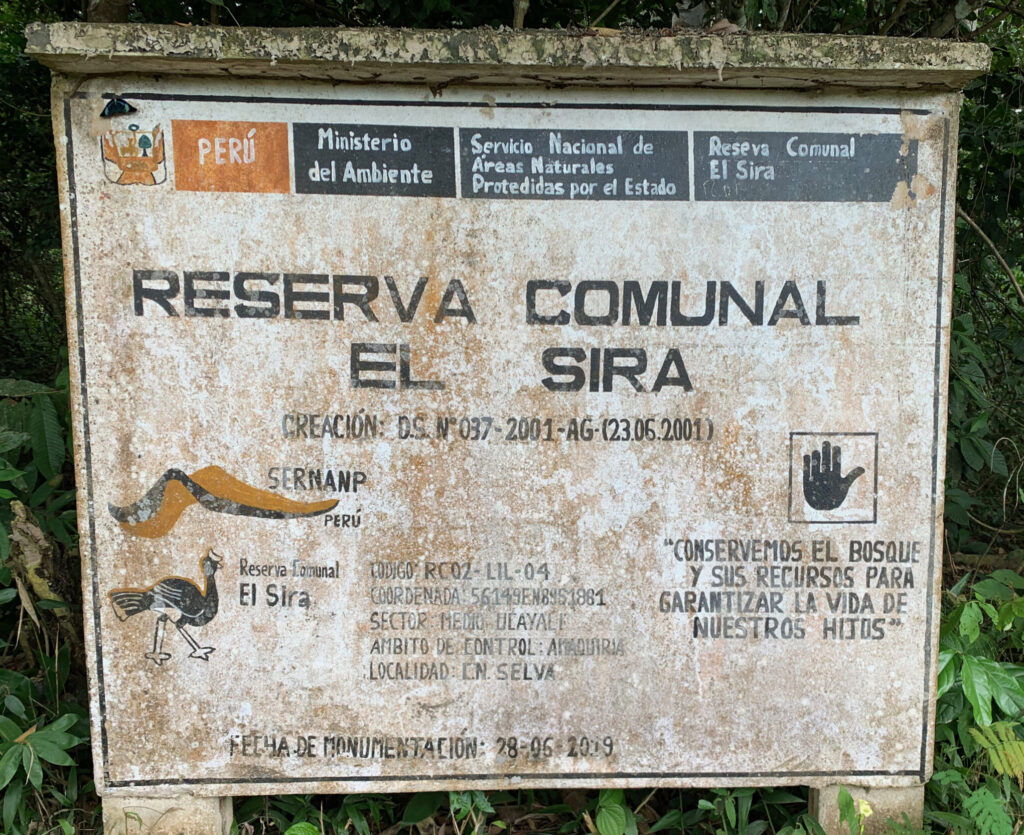
In an evolution of all the longterm relations involved, a key timberman, Melvin, now lives permanently in the community of Pijuayal and leads the community’s ‘vigilance committee’, liasing with the El Sira park rangers to protect the communal reserve. In turn, I have been supporting the planting of hardwood saplings in many of the places where we once worked together felling trees.
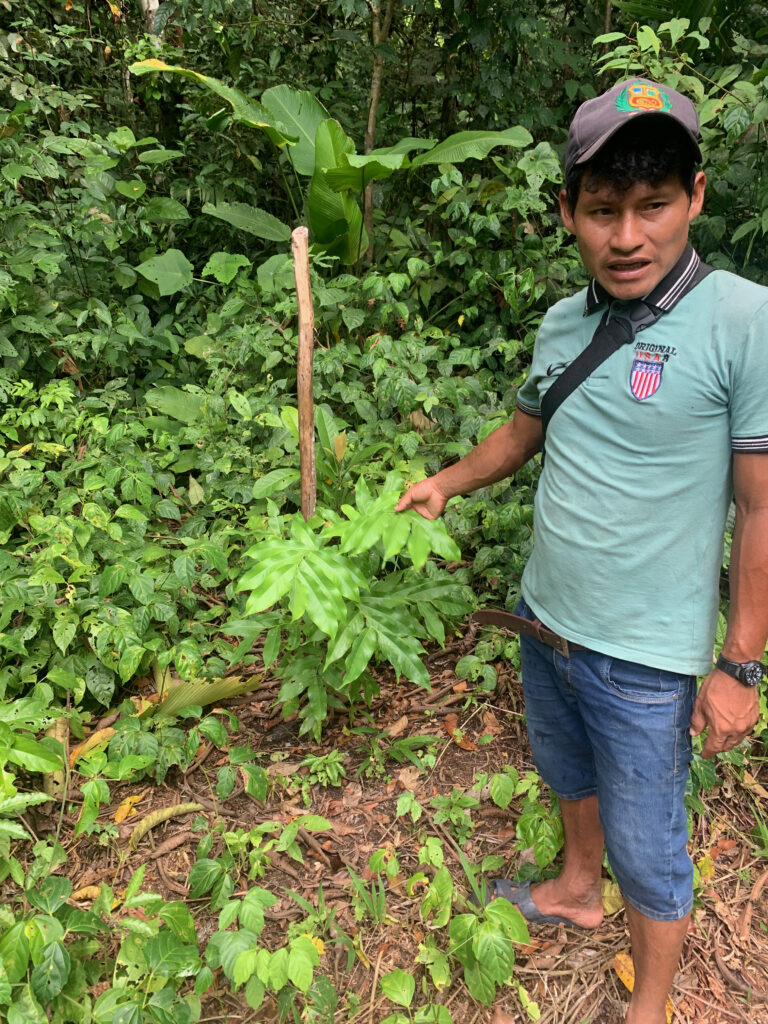

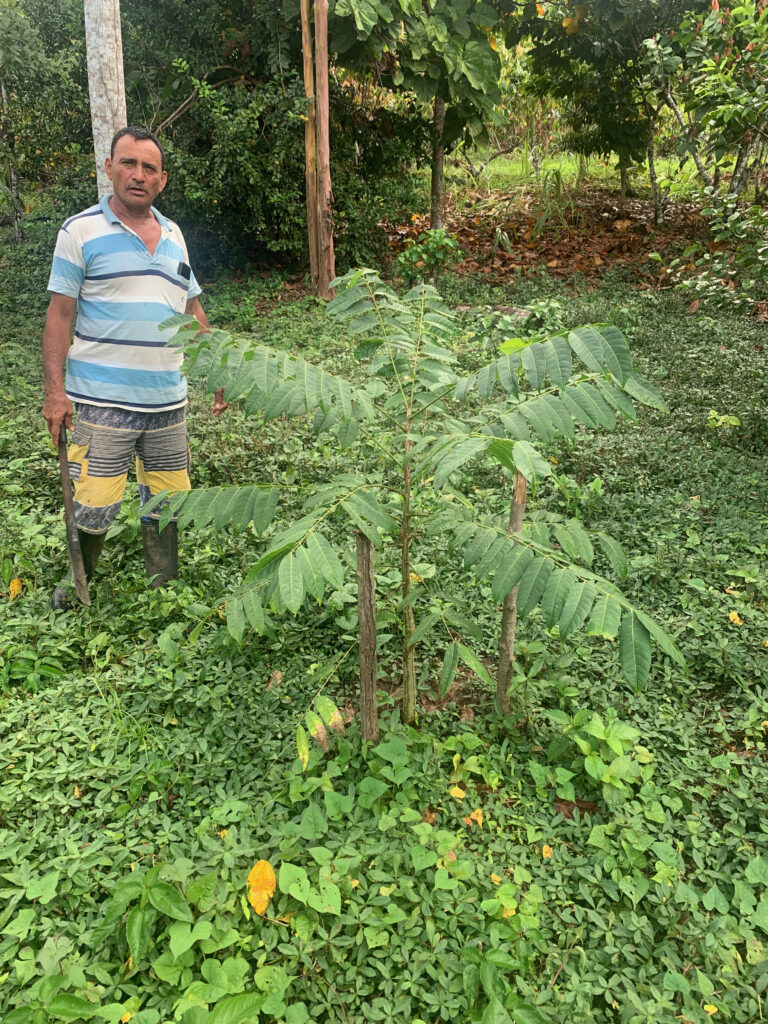
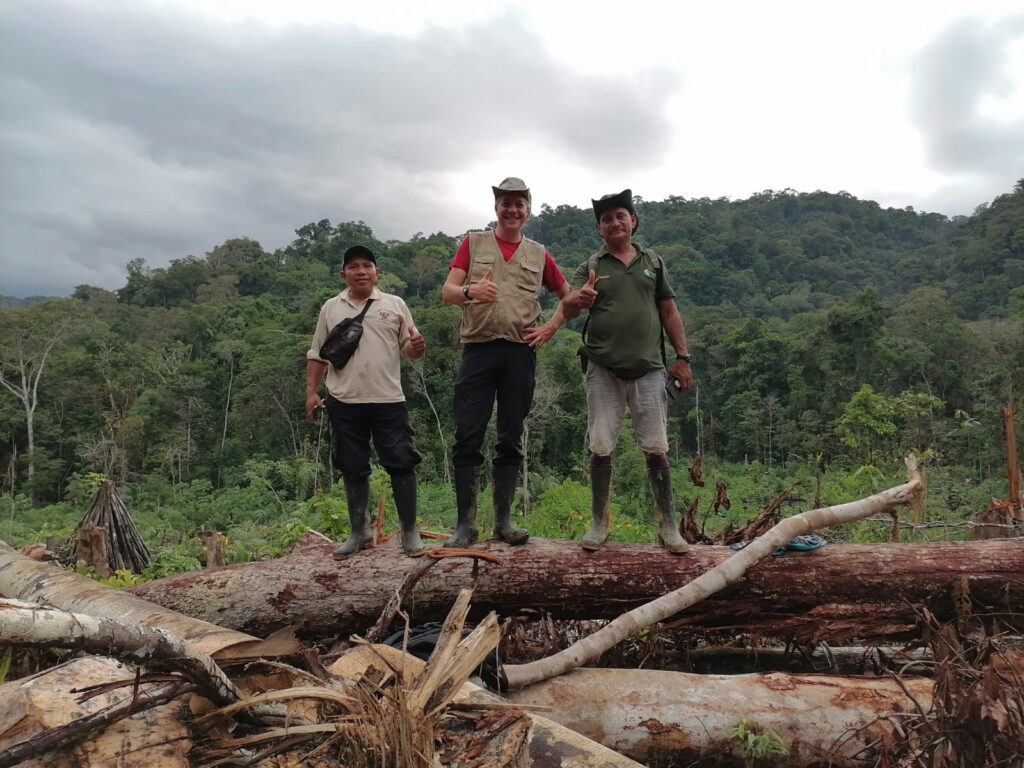
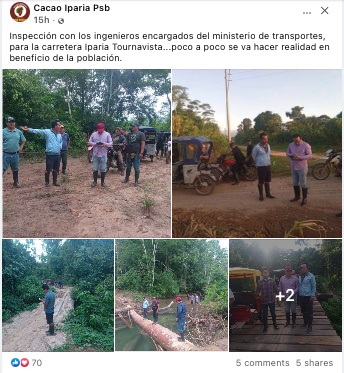
A final strand in this work is around the building of a local road and the role of social media as both a source and subject of research. This picture is from the local Mayor’s Facebook page showing his work supporting the construction of a road connecting the district capital of Iparia to the regional capital of Pucallpa. While local people discuss the issues with migration and environmental degradation that such a road is likely to cause it still has overwhelming local support, including from the management committee of the El Sira communal reserve.
IDS Development Lecture March 2023
Sustained destruction: Cattle, roads, and ‘sustainable development’ around a communal reserve in Peruvian Amazonia
Relevant Publications
Killick, Evan. 2009. Ashéninka Amity: A Study of Social Relations in an Amazonian Society. J.R.A.I. 15(4):701-718.
Killick, Evan. 2008. Creating Community: Land titling, education and settlement formation amongst the Ashéninka of Peruvian Amazonia. Journal of Latin American and Caribbean Anthropology. 13(1):22-47.
Killick, Evan. 2008. Godparents and Trading Partners: Social and Economic Relations in Peruvian Amazonia. Journal of Latin American Studies. 40(2): 303-328.
Killick, Evan. 2007. Autonomy and Leadership: Political Formations among the Ashéninka of Peruvian Amazonia. Ethnos.72(4):461-482.
